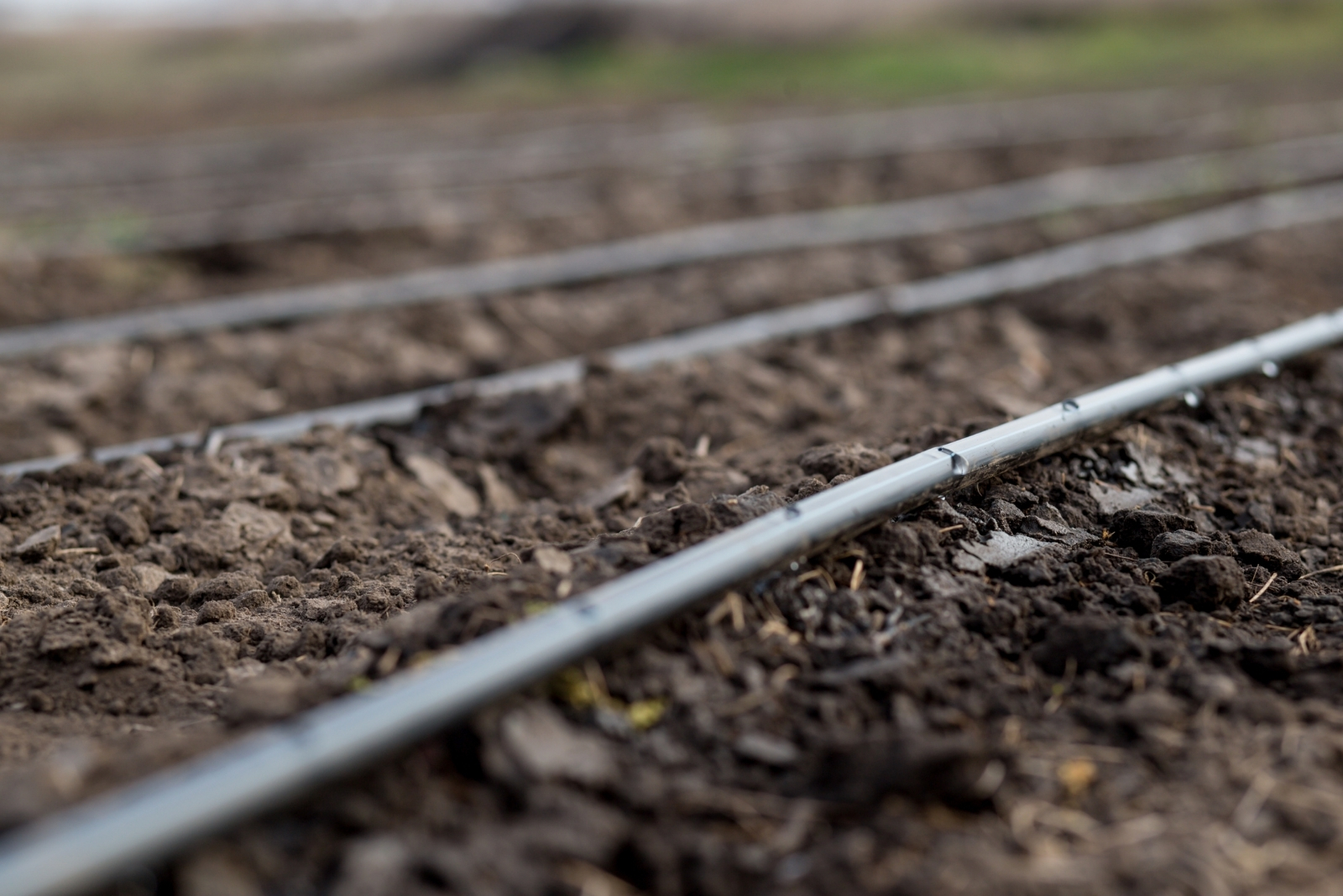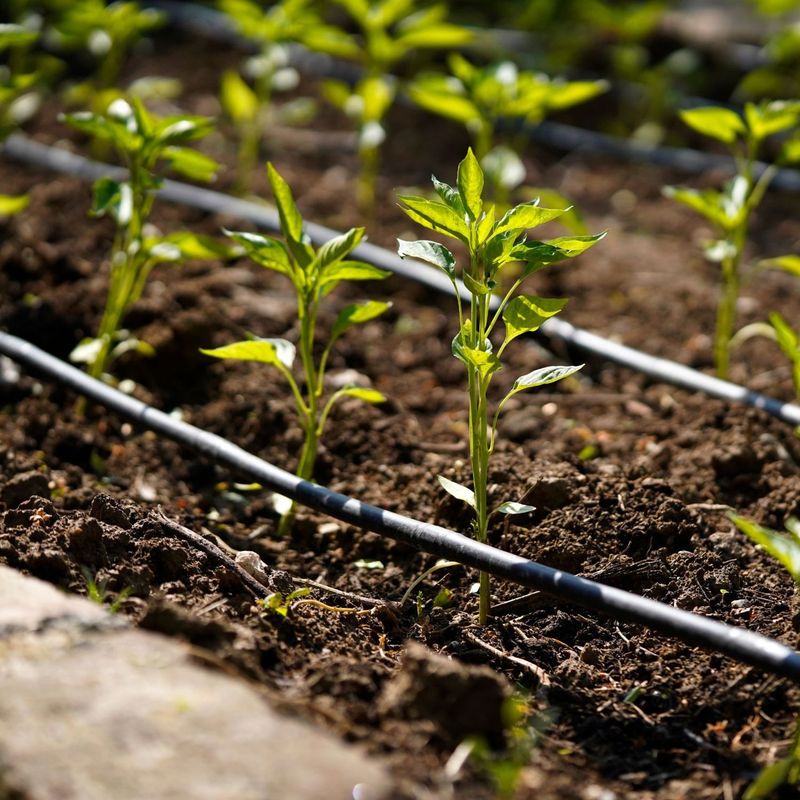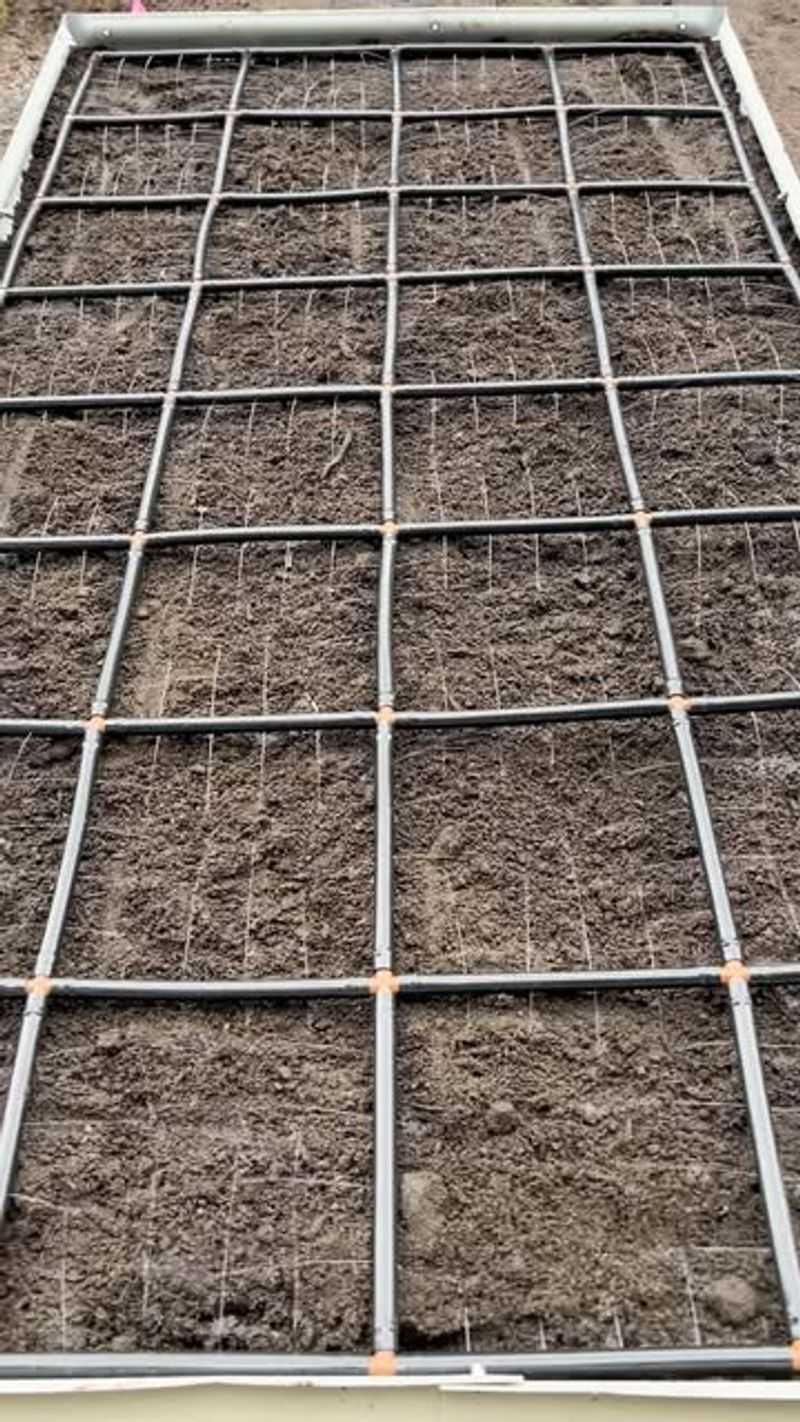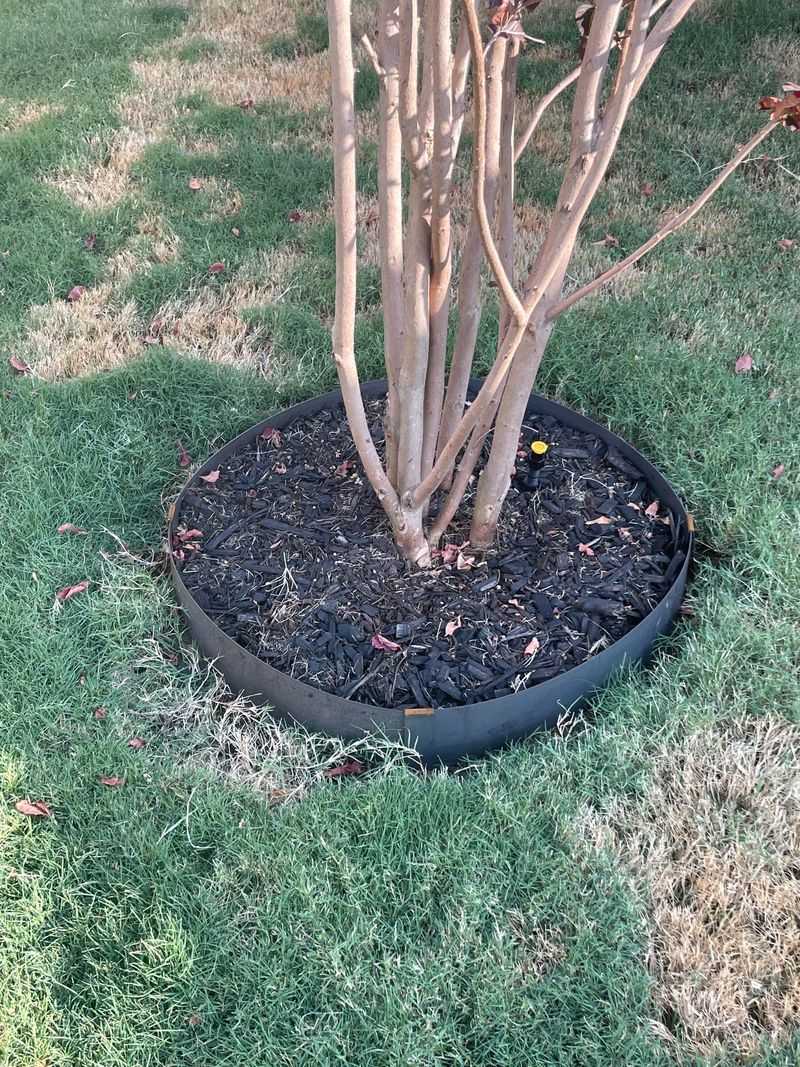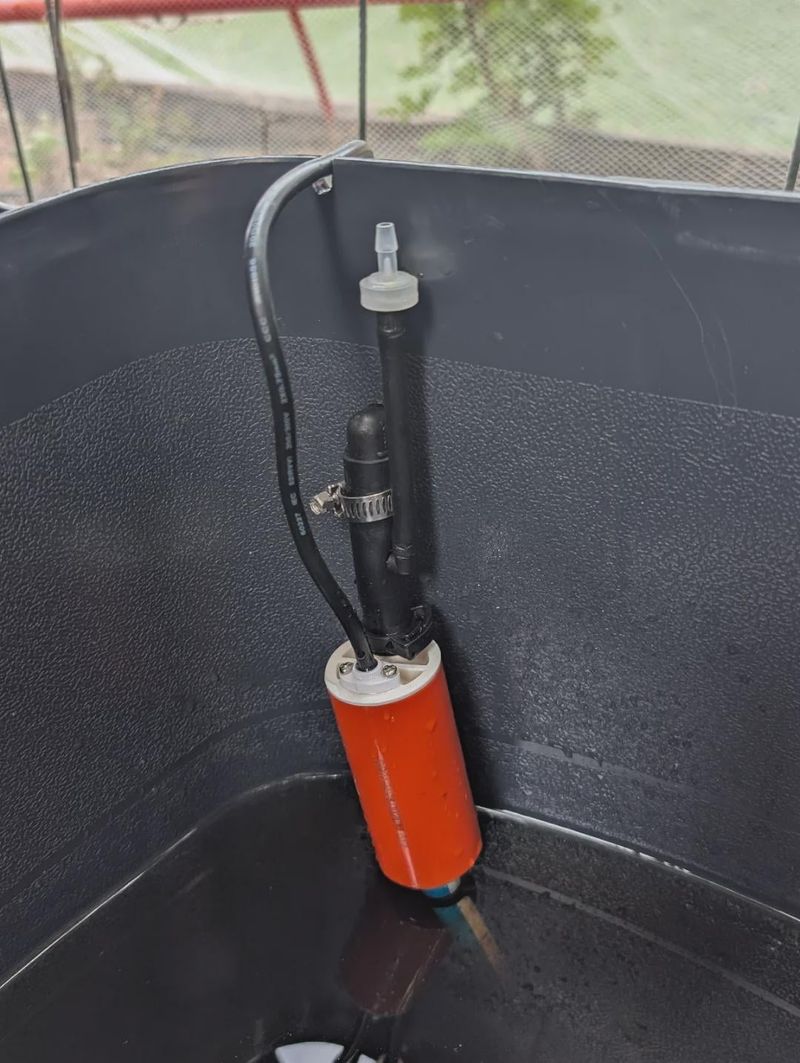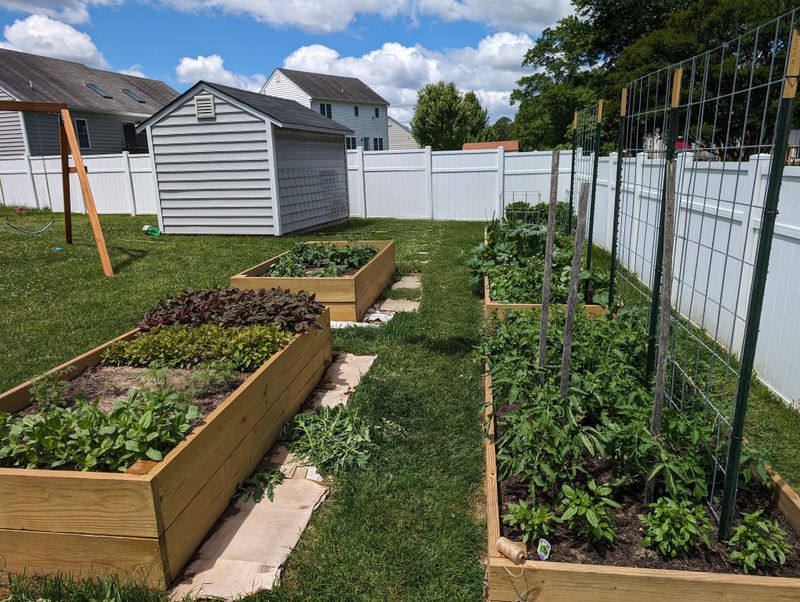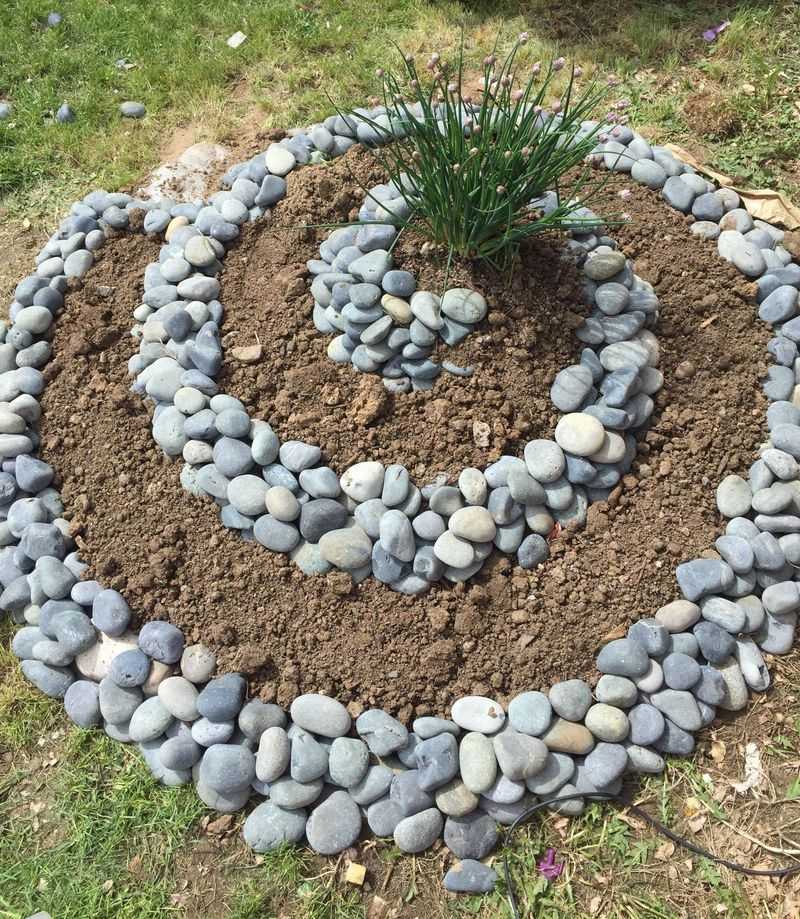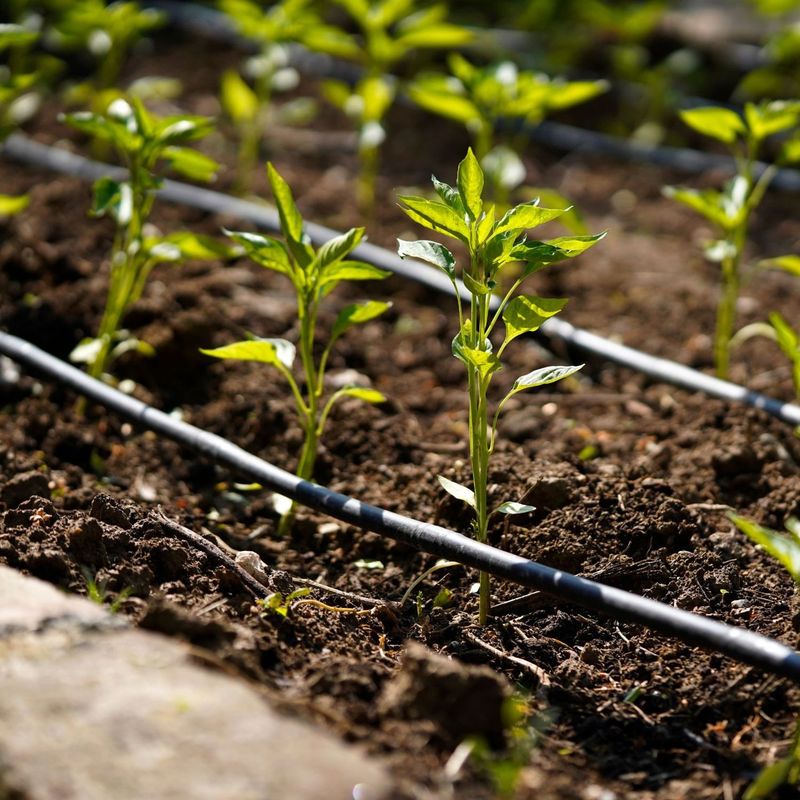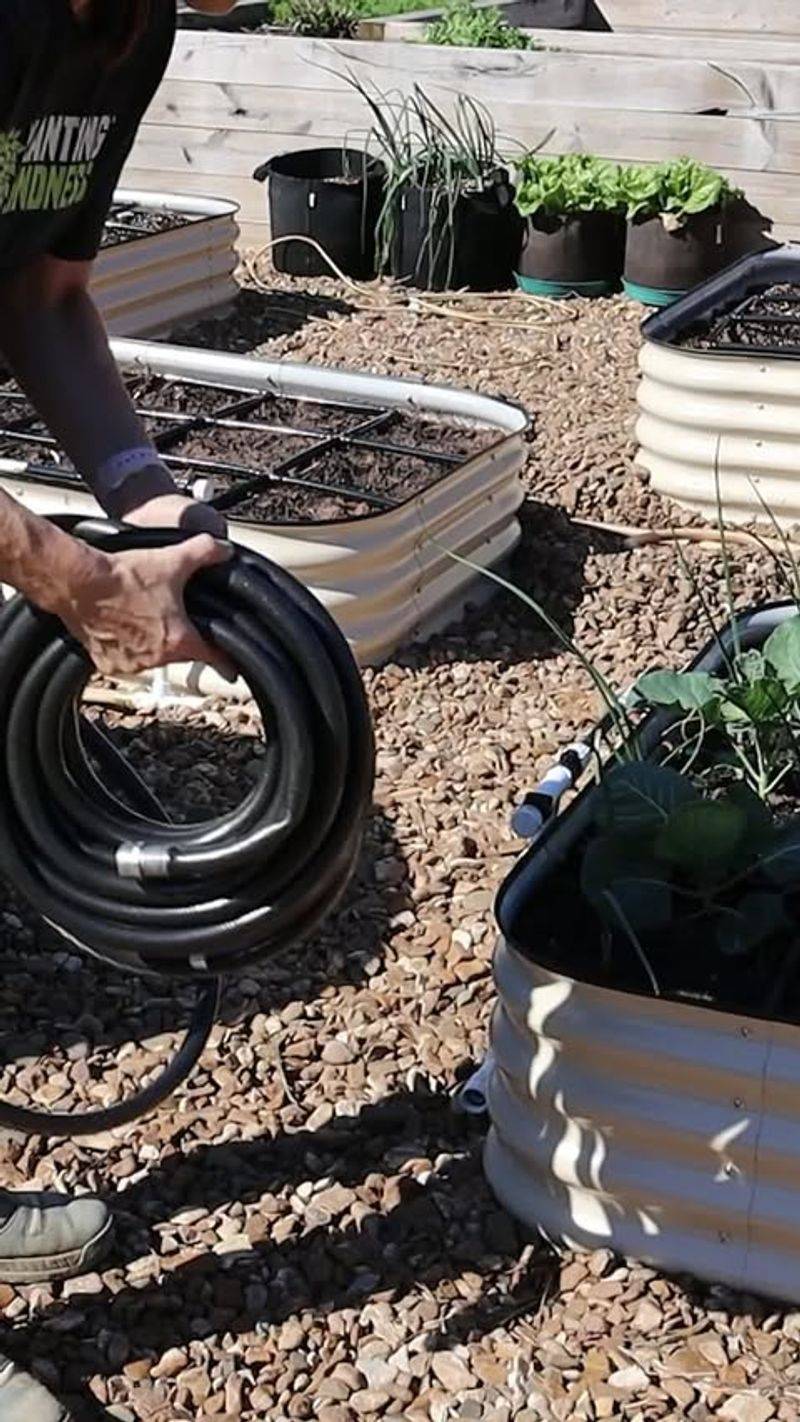Some gardeners in Memphis have found that a little creative thinking with irrigation goes a long way. Smart drip loops don’t just keep plants happy — they make watering almost effortless.
Imagine a network that delivers the right amount without waste, even on those scorching August days. It’s like having a quiet helper who knows exactly when your plants are thirsty.
A few small changes to your setup could have you saving gallons without even noticing.
1. Spiral Root Zone Design
Memphis gardeners love this spiral pattern that circles plant bases with graduated loops. The design delivers water directly to expanding root systems as plants grow.
You’ll save gallons each week while keeping your Tennessee garden lush. Installation takes just an afternoon with basic tubing and a few connectors.
2. Grid-Pattern Vegetable Bed System
Laying out drip lines in a grid pattern works wonders for rectangular vegetable gardens in Tennessee’s clay-rich soil. Water seeps slowly into the ground instead of running off.
Many Memphis gardeners report using 40% less water with this setup compared to traditional methods. The evenly spaced emitters ensure consistent moisture throughout your growing space.
3. Tree Ring Bubbler Combo
Young trees in Memphis yards thrive with ring-shaped drip lines combined with mini bubblers. This hybrid approach delivers deep watering that encourages roots to grow downward rather than staying near the surface.
The Tennessee climate can be tough on new trees, but this system helps them establish quickly. Most setups need just 10 minutes of water twice weekly.
4. Container Garden Micro-Tubing
Tiny 1/4-inch tubes connect to main lines and snake into potted plants, making this perfect for Memphis patios and decks. Each pot gets its own adjustable emitter that you can fine-tune based on plant needs.
The flexible system adapts to Tennessee’s unpredictable rainfall patterns. You’ll appreciate how discreet the thin black tubing looks among your container plants.
5. Slope-Friendly Pressure Compensating Layout
Many Memphis yards have gentle slopes that make even watering tricky. This specialized system uses pressure-compensating emitters that deliver the same amount of water regardless of their position on the slope.
Tennessee gardeners with uneven terrain swear by this solution. The smart design prevents water from rushing downhill and causing erosion or pooling at the bottom.
6. Perimeter Garden Bed Configuration
Running drip lines along the edges of foundation plantings creates a water-efficient border around Memphis homes. The setup targets shrubs and perennials that frame your house without wasting water on areas that don’t need it.
This Tennessee-friendly design can be hidden under mulch for a clean look. Many homeowners connect it to rain barrels for additional conservation benefits.
7. Herb Spiral Precision System
Herb spirals are gaining popularity in Memphis gardens, and this specialized drip design follows the spiral’s unique shape. Different emitter spacings accommodate herbs with varying water needs as they cascade down the structure.
The clever Tennessee adaptation uses gravity to help distribute water efficiently. Mediterranean herbs go at the top where it’s drier, while thirstier varieties thrive lower down.
8. Native Plant Zoned Configuration
Group Tennessee native plants by water needs and install separate drip zones for each category. This smart approach lets Memphis gardeners give each plant exactly what it requires without overwatering drought-tolerant natives.
The system typically includes a controller that adjusts watering schedules based on plant groupings. You’ll create a beautiful, eco-friendly landscape that supports local pollinators while conserving water.
9. Raised Bed Snaking Pattern
Weaving drip lines in S-curves through raised beds maximizes coverage in Memphis vegetable gardens. The snake-like pattern ensures water reaches more soil area than straight lines would, promoting better root development.
Tennessee gardeners find this design especially helpful during hot summer months. The efficient layout means you can grow more food with less water, even when temperatures climb into the 90s.

